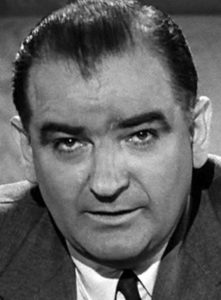
By Jim O’Neal
Only two Americans have been made an Honorary Burgess of the Borough by the people of St. Andrews. One was Ben Franklin and the other was amateur golfer Bobby Jones. When golfers evaluate each other, it is not about their swing, iron play or prize money. The question is: “How many Majors have they won?” The modern-day Majors comprise four tournaments: the U.S. Open, PGA Championship, the Open Championship (British), and the Masters Golf Tournament.
This unique criterion is the yardstick to measure greatness and the current all-time leader is Jack Nicklaus, with a career total of 18 wins. Eldrick Tont “Tiger” Woods is No. 2 with 14, and there is growing skepticism about his chances to tie or surpass Nicklaus (my bet is no).
Usually ranked No. 3 on the all-time greatest list (which typically includes Arnold Palmer, Ben Hogan and Sam Snead) is a remarkable man by the name of Robert Tyre Jones Jr. (aka Bobby Jones). With childhood health issues, Jones wasn’t expected to live past his fifth birthday, but he became the greatest sports legend of the first half of the 20th century. He is golf’s consummate icon, the measuring stick against which all aspiring champions will be measured. In a sport where so many compete so regularly, no player has ever dominated the way Jones did between 1920 and 1930.
During that 10-year stretch, Jones competed in 45 events, winning 21 and finishing in second place seven times. From the tender age of 19 until he was 28, he won 13 Major Championships and set records that lasted for more than 60 years. He is also the only man to win all four of his era’s Majors in one year: the British Open, British Amateur, the U.S. Open, and U.S. Amateur. Since no other amateur has won the U.S. Open since the 1930s, this is a cinch to be the only sports record that will never be broken or tied … as long as the game of golf is played.
Jones also was the embodiment of sportsmanship. At one point during the 1925 U.S. Open, he penalized himself a stroke for a slight ball movement that no one noticed. Everyone congratulated him profusely on his honesty, but he simply replied, “You might as well praise a man for not robbing a bank.”

After Jones set this precedent for self-policing, golfers are still trying to match his uncompromising integrity. Golf is the only professional sport that really doesn’t need referees or umpires, since players usually call all the penalties. It’s an astonishing situation when compared to cycling, gymnasts or track stars (doping), or professional soccer, where players conspire to fix games. Or baseball, basketball or football, where players and coaches are routinely ejected for complaining about adverse rulings.
However, a truly remarkable thing happened in 1930 when Bobby Jones won golf’s Grand Slam at age 28 … he retired from competitive golf to focus on his law career. This is analogous to Joe DiMaggio retiring in 1941 after hitting in 56 straight games, Babe Ruth in 1927 after his 60 home runs, or Roger Bannister hanging up his running shoes on May 6, 1954, after becoming the first man in history to run the mile in under 4 minutes.
The next phase of Jones’ life included transforming 365 acres of land in Augusta, Ga., into a golf course that is revered by golfers worldwide: the Augusta National Golf Club. This is arguably the planet’s No. 1 golf course and venerable site of the greatest tournament in the history of the game: the Masters. The just-completed 2017 Masters was the 81st time the world’s best golfers played for the coveted Green Jacket.
Play is strictly by invitation-only, as is membership in Augusta National. Condoleezza Rice was one of the first two women invited to join (2012). I have been patiently waiting a long time and only recently adopted Groucho Marx’s philosophy: “I would never join a club that would have me as a member!”
P.S. To whoever decides on members …. just kidding.
 Intelligent Collector blogger JIM O’NEAL is an avid collector and history buff. He is president and CEO of Frito-Lay International [retired] and earlier served as chairman and CEO of PepsiCo Restaurants International [KFC Pizza Hut and Taco Bell].
Intelligent Collector blogger JIM O’NEAL is an avid collector and history buff. He is president and CEO of Frito-Lay International [retired] and earlier served as chairman and CEO of PepsiCo Restaurants International [KFC Pizza Hut and Taco Bell].


